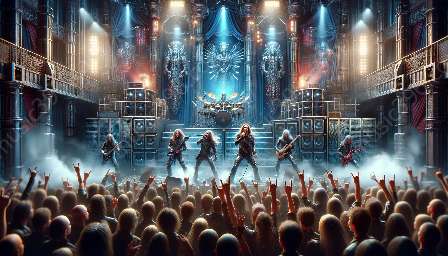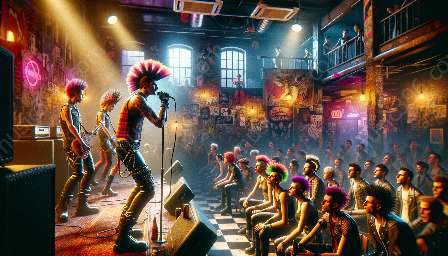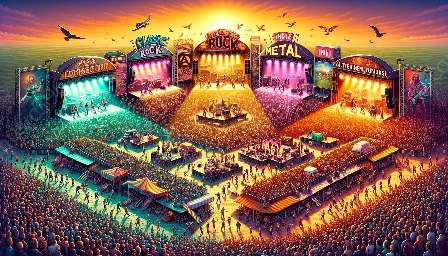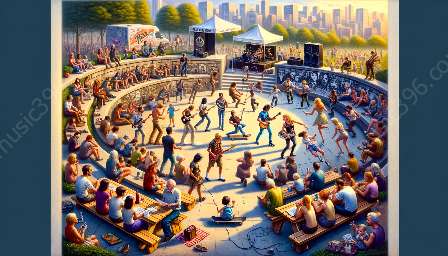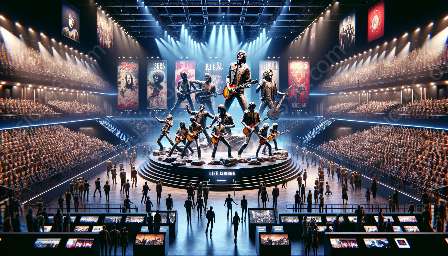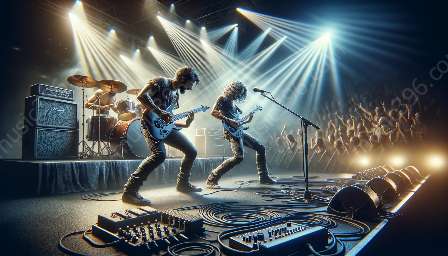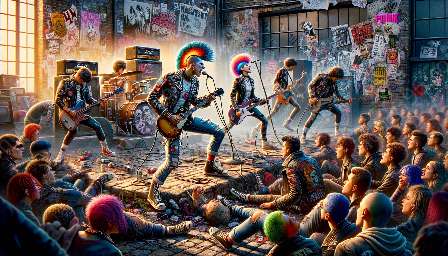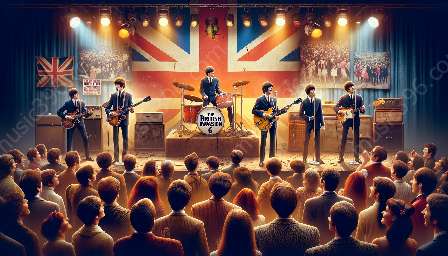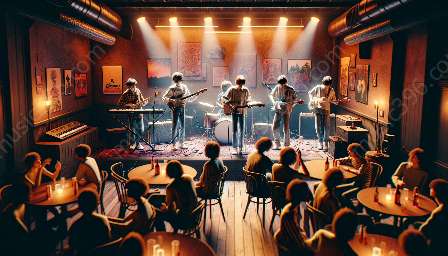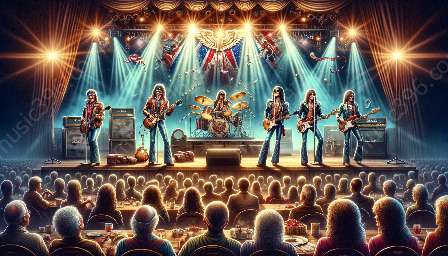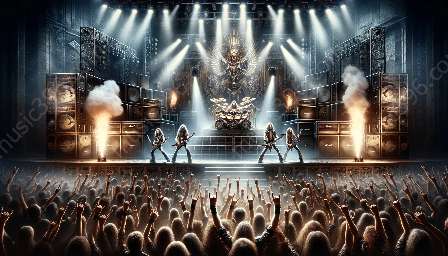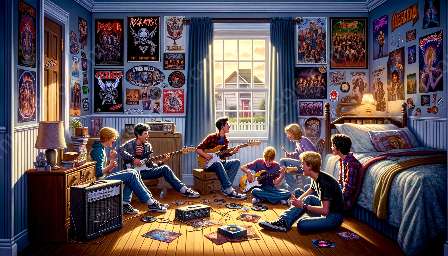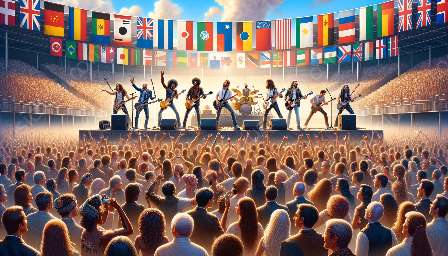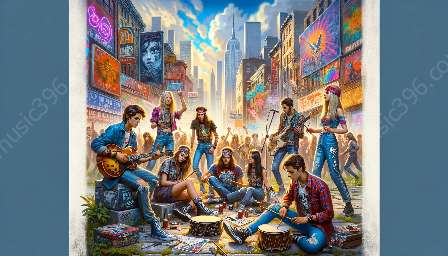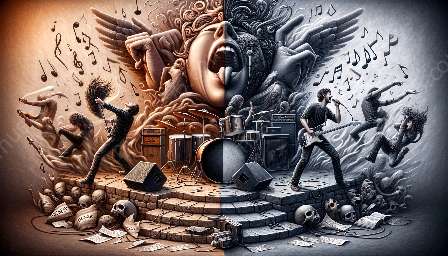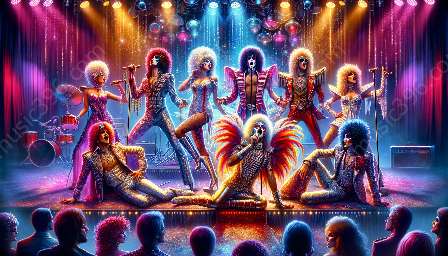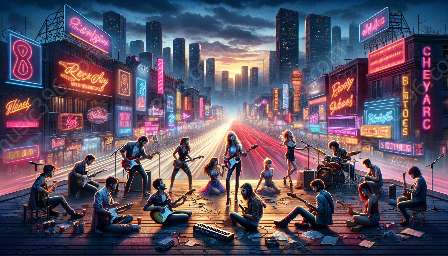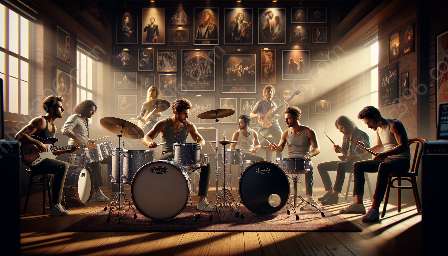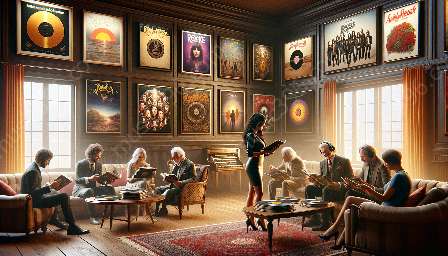Rock music and fashion have long been intertwined, with the rebellious and non-conformist spirit of rock influencing style trends for decades. From the emergence of punk to the glamor of rock stars, the fashion in rock music has played a pivotal role in shaping cultural movements and trends. This topic cluster explores the evolution of rock music fashion and style, and its compatibility with the trends in rock music.
The Evolution of Rock Music Fashion
Rock music and its associated fashion have undergone significant transformations over the years. The genre's style has been heavily influenced by the musicians themselves, as well as the social and cultural contexts in which they operated. From the early days of rock 'n' roll to the grunge era of the 1990s, rock music fashion has evolved with the changing times and musical trends.
The Influence of Rock Icons
Rock icons such as Elvis Presley, David Bowie, and Kurt Cobain have left an indelible mark on fashion trends. Elvis brought rockabilly and leather jackets into the mainstream, while Bowie's androgynous style and glam rock sensibilities set new standards for gender-bending fashion. Cobain's unkempt, anti-fashion look defined the grunge era and inspired a generation of disaffected youth.
Punk Fashion
The punk movement of the 1970s was a pivotal moment in rock music fashion. Punk rockers embraced DIY aesthetics, ripped clothing, safety pins, and bold hairstyles as a rejection of mainstream fashion. This rebellious and anarchic style continues to influence contemporary fashion and subcultures.
Impact on Cultural Movements
Rock music fashion has not only shaped individual trends but has also had a profound impact on broader cultural movements. The rebellious and anti-establishment ethos of rock has often aligned with social and political movements, leading to the adoption of certain fashion elements as symbols of protest and dissent.
Revival and Reinterpretation
While many classic rock fashion elements endure, they are often reimagined and revived by new generations. Designers and fashionistas continue to draw inspiration from rock music, incorporating elements such as leather, studs, and band t-shirts into contemporary fashion collections. This continual reinterpretation ensures that rock music fashion remains relevant and influential.
Compatibility with Trends in Rock Music
The evolution of rock music fashion has paralleled the changing trends in the music itself. As rock music has diversified into sub-genres such as metal, indie, and alternative rock, the associated fashion has also expanded to encompass a wide range of styles. Each sub-genre brings its own unique fashion sensibilities, reflecting the diversity and dynamism of rock music.
Sub-Genre Fashion Trends
Metal fashion often incorporates leather, studs, and dramatic makeup, reflecting the genre's aggression and theatricality. Meanwhile, indie rock fashion embraces a more laid-back and vintage-inspired look, with flannel shirts, skinny jeans, and retro sneakers epitomizing the style. Alternative rock encompasses a wide spectrum of fashion influences, from grunge-inspired flannels and combat boots to more eclectic and experimental ensembles.
Modern Fashion Influences
Contemporary rock music fashion is often shaped by a blend of retro revival, modern streetwear, and high-fashion influences. Rock stars and celebrities continue to influence trends through their stage outfits and red carpet appearances, while streetwear brands draw inspiration from the gritty aesthetics of rock subcultures.
Conclusion
Rock music fashion and style have been integral components of the genre's cultural impact. From the rebellious spirit of punk to the glamorous allure of rock stars, the fashion in rock music has both reflected and influenced societal shifts and cultural movements. As rock music continues to evolve, so too will its associated fashion, ensuring that the legacy of rock's style innovations endures for generations to come.


